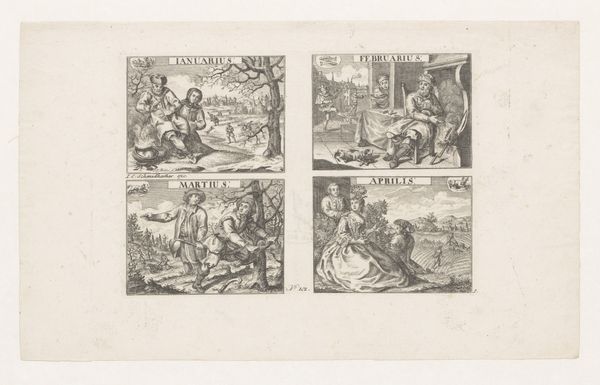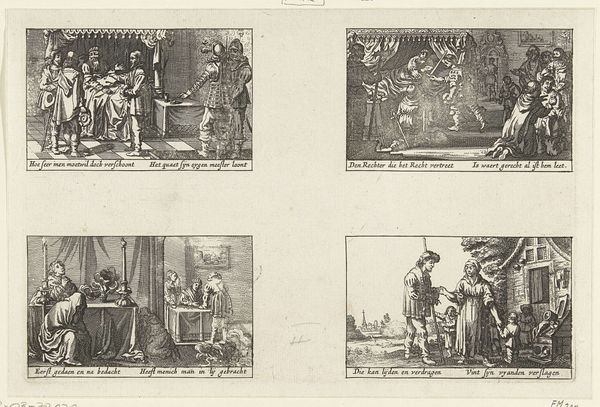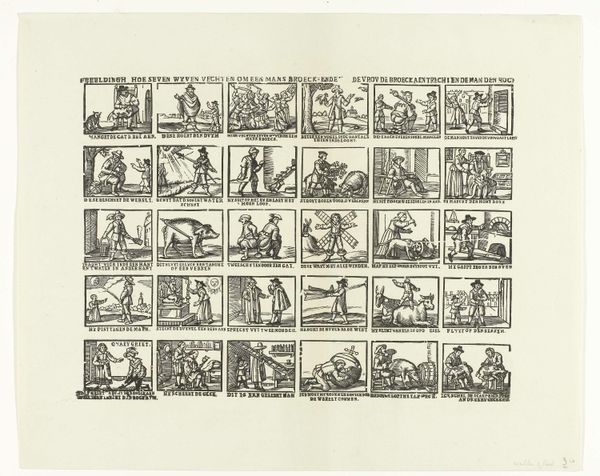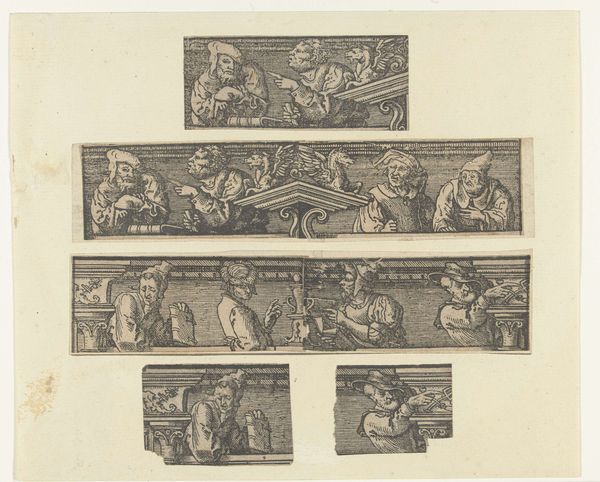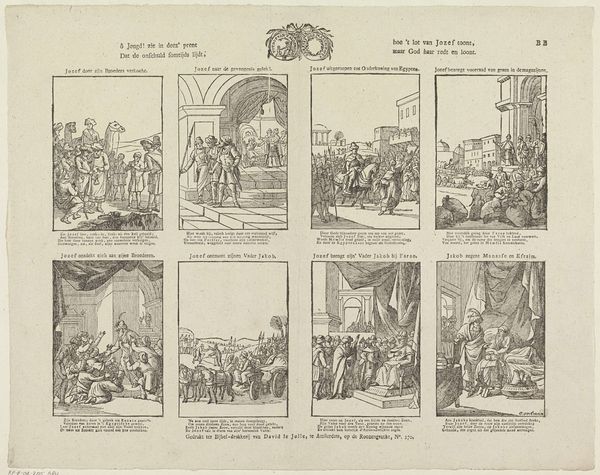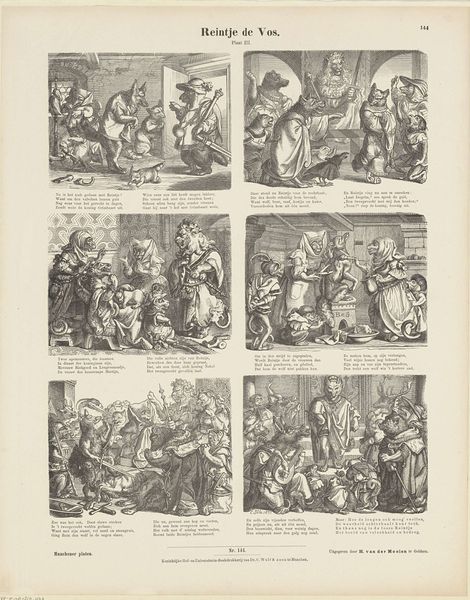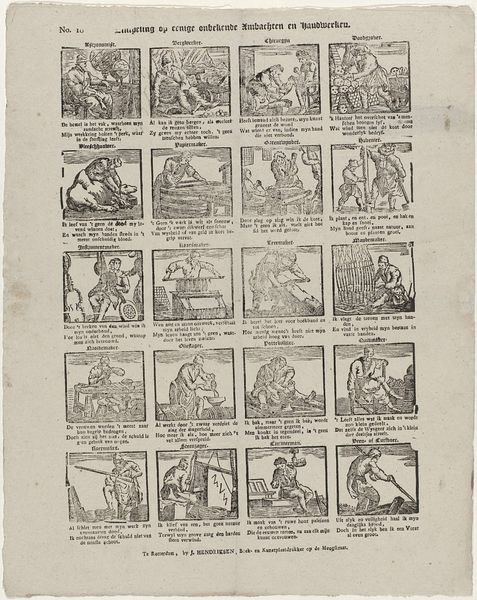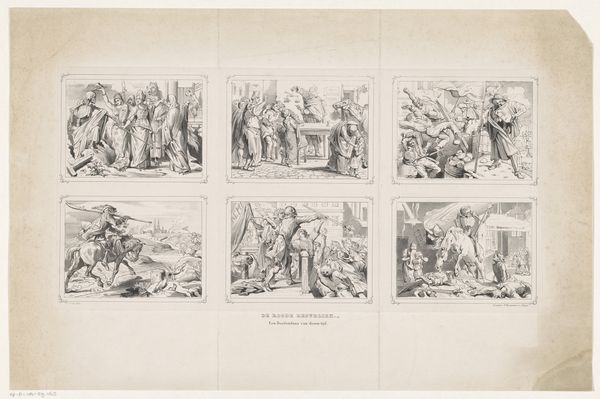
Dimensions: height 211 mm, width 336 mm
Copyright: Rijks Museum: Open Domain
This print of ‘The Twelve Months’ was made anonymously, using the intaglio process. An engraver would have painstakingly cut lines into a copper plate, with the furrows holding ink, and then transferred to paper. The resulting print has a crisp, linear quality, well-suited to the allegorical figures representing each month. These scenes weren’t just aesthetic exercises; they vividly captured the rhythms of pre-industrial life. Look closely and you’ll see January warming by the fire, June tending to pigs, August harvesting grain. Each month embodies specific labors, connecting people directly to the land and its seasonal demands. The act of engraving itself mirrors this dedication. The hand work and time required to produce such images speaks volumes about cultural values prior to industrialization. It’s a reminder that even seemingly simple prints carry deep social and economic significance. By considering how things are made, we gain a richer understanding of their place in history.
Comments
No comments
Be the first to comment and join the conversation on the ultimate creative platform.
